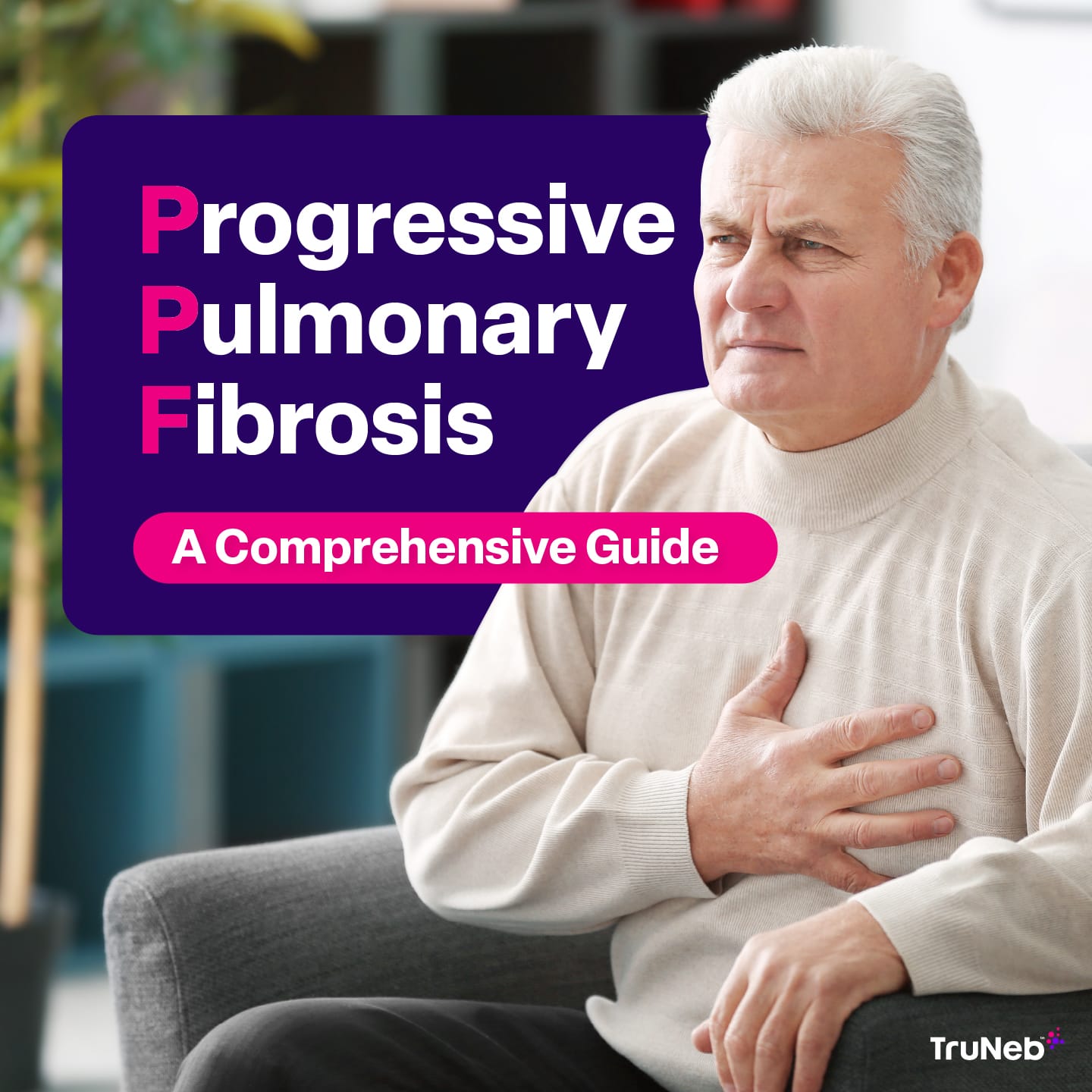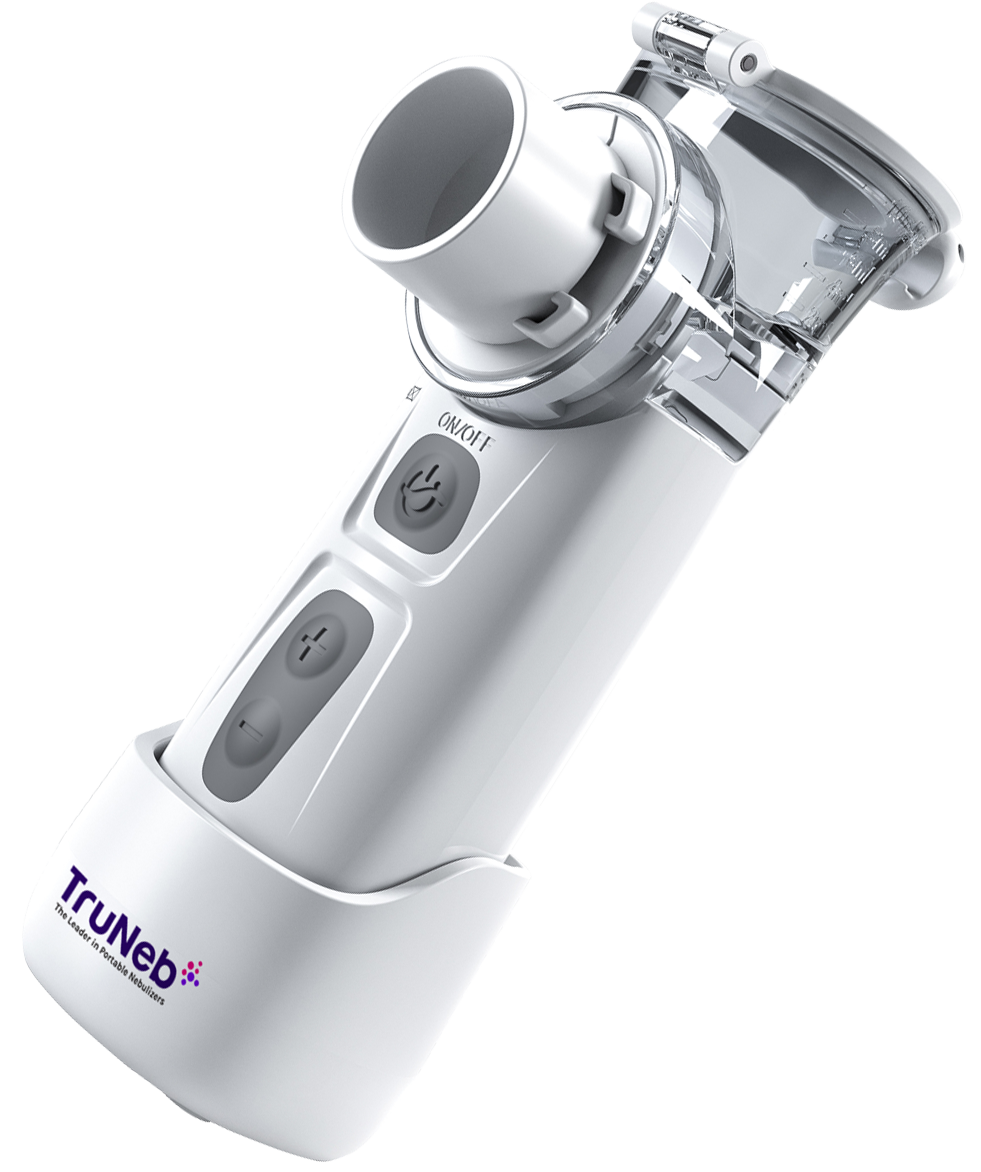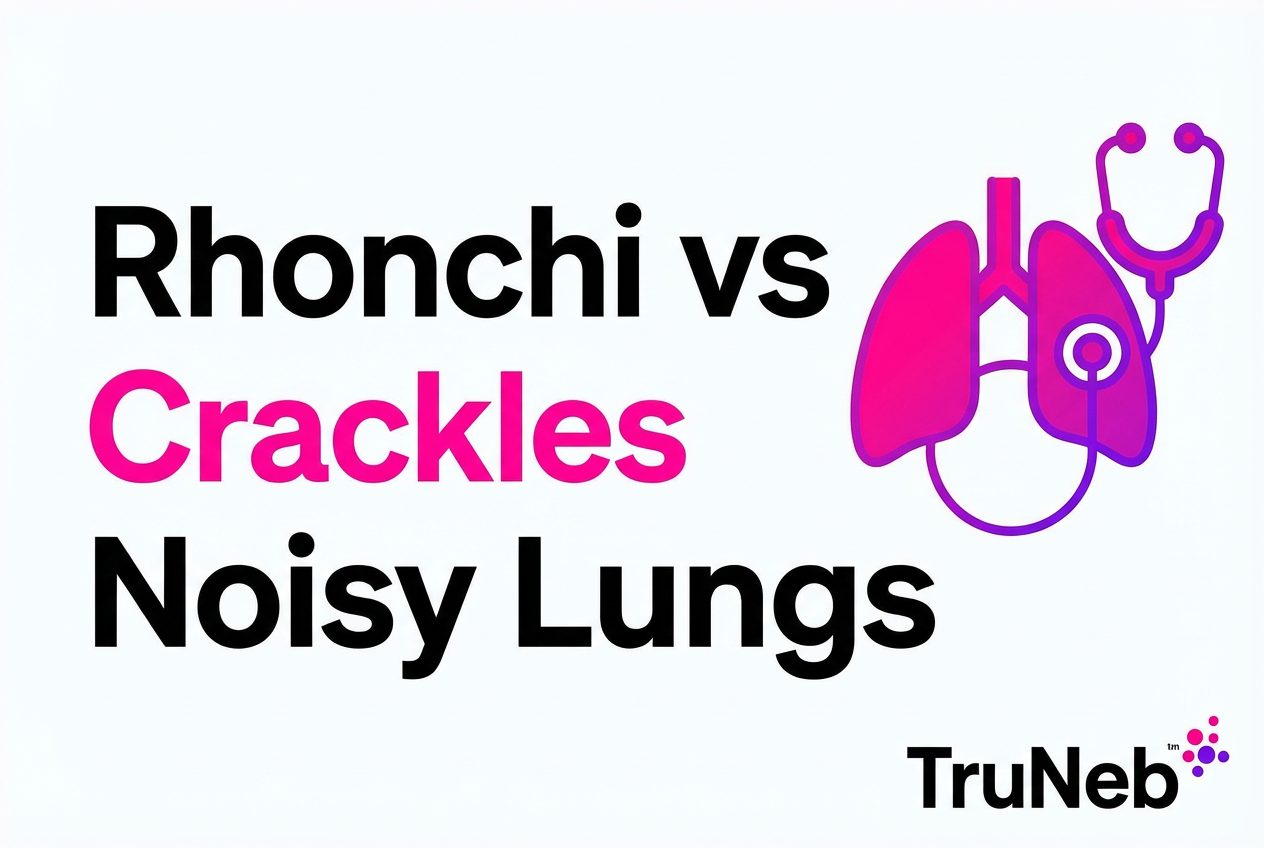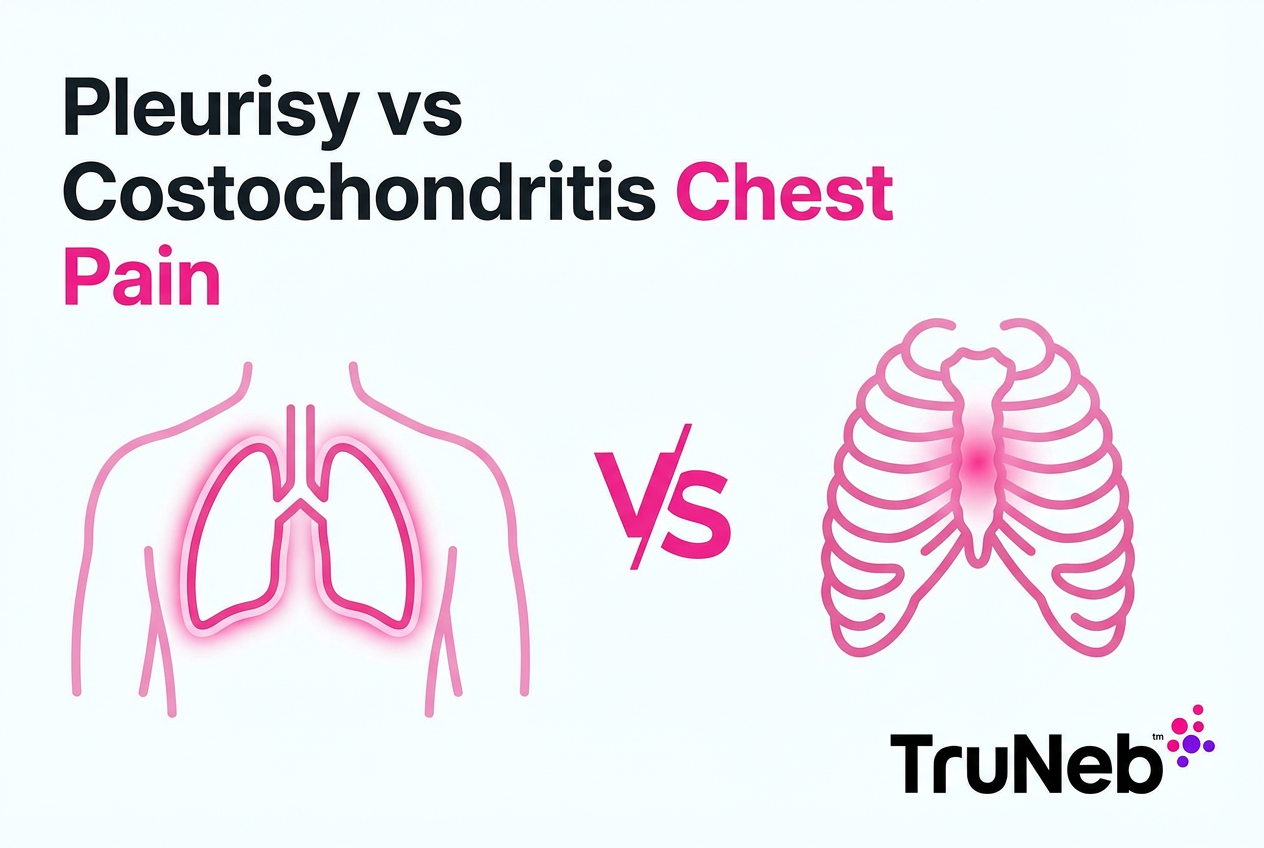On this page

If you or a loved one has been diagnosed with pulmonary fibrosis, you may have heard the term “progressive pulmonary fibrosis” or PPF thrown around.
Progressive pulmonary fibrosis is a condition where the scarring (fibrosis) in your lungs continues to worsen over time, even with treatment. It's like your lungs are slowly being wrapped in an ever-tightening blanket of scar tissue, making it harder and harder to breathe.
In this article we’ll dive deep into the disease and talk about treatments – so you’re equipped with as much helpful information as possible.
An Overview of Progressive Pulmonary Fibrosis
PPF doesn't play favorites – it can affect people with various types of interstitial lung diseases (ILDs). In fact, studies show that about 18-32% of patients with non-IPF (idiopathic pulmonary fibrosis) ILDs develop progressive pulmonary fibrosis within 5-7 years of diagnosis. That's a large number of people facing this challenging condition.
Living with PPF isn't a walk in the park. As the disease progresses, patients deal with declining lung function, which can lead to:
- Shortness of breath, even during simple daily activities
- Reduced quality of life
- Increased need for oxygen therapy
- More frequent hospitalizations
- Unfortunately, a shorter life expectancy
Types of Fibrosing Interstitial Lung Diseases (ILDs) related to PPF
PPF isn't just limited to one type of lung disease. It can occur in various ILDs, including:
- Idiopathic pulmonary fibrosis (IPF)
- Connective tissue disease-associated ILD (think conditions like rheumatoid arthritis or scleroderma)
- Chronic hypersensitivity pneumonitis
- Unclassifiable ILD
Each of these conditions can lead to PPF, though the rate and severity of progression can vary.
Pathophysiology of PPF
So, what's actually happening in your lungs with PPF? Here's the nitty-gritty:
- Injury to lung tissue: This can be caused by various factors like environmental exposures, autoimmune reactions, or unknown causes.
- Abnormal healing response: Instead of healing normally, your lungs go into overdrive, producing too much scar tissue.
- Fibrosis formation: This excess scar tissue builds up, making your lungs stiff and less able to expand.
- Reduced gas exchange: As fibrosis progresses, it becomes harder for oxygen to pass from your lungs into your bloodstream.
- Continued progression: Without effective treatment, this cycle continues, leading to worsening lung function over time.
Risk factors for developing PPF
While anyone with an ILD can potentially develop PPF, certain factors may increase your risk:
- Older age
- Male gender
- Smoking history
- Certain genetic factors
- More severe disease at diagnosis
- Specific patterns on high-resolution CT scans (like the dreaded "honeycomb" pattern)
Identifying Progressive Pulmonary Fibrosis
Signs & symptoms of disease progression
Recognizing the signs of PPF is crucial. Keep an eye out for:
- Worsening shortness of breath, especially with activity
- Increasing need for oxygen
- Persistent, dry cough
- Unintended weight loss
- Fatigue that just won't quit
- Worsening results on your pulmonary function tests
Experiencing these symptoms doesn’t always mean you have PPF, but they warrant an appointment with your doctor to dig deeper into the underlying culprit.
Diagnostic criteria for PPF
Doctors use a combination of factors to diagnose PPF:
- Worsening respiratory symptoms
- Decline in lung function tests (like FVC or DLCO)
- Increasing fibrosis on high-resolution CT scans
If you're ticking at least two of these boxes within a year, your doctor might be looking at a case of PPF.
Importance of detection and regular monitoring
When it comes to PPF, catching it early is key. Regular check-ups and tests can help your healthcare team spot progression before it becomes severe. This might include:
- Frequent pulmonary function tests
- Regular high-resolution CT scans
- Ongoing symptom assessments
By staying on top of your condition, you and your doctor can make timely decisions about adjusting your treatment plan, potentially slowing the progression of your disease and maintaining your quality of life for longer.
Diagnostic Tests and Monitoring
When it comes to keeping tabs on your PPF, your doctor may order initial and ongoing tests to track your lung health and disease progression including:
High-resolution computed tomography (HRCT)
Think of HRCT as the superhero of lung scans. It's like a regular CT scan, but with extra capabilities:
- Provides detailed images of your lung tissue
- Can spot even tiny areas of fibrosis
- Helps doctors track changes in your lungs over time
Your doctor might order these scans regularly to keep an eye on how your PPF is progressing. It's like having a map of your lungs that gets updated periodically.
Pulmonary function tests (PFTs)
PFTs measure how well your lungs are working and can track changes over time. The two main tests you'll hear about are:
1. Forced vital capacity (FVC)
This test measures how much air you can forcefully exhale after taking a deep breath. It's like seeing how much air your lungs can hold and how quickly they can push it out. A declining FVC can be a sign that your PPF is progressing.
2. Diffusing capacity for carbon monoxide (DLCO)
Don't worry – they're not making you inhale car exhaust! This test uses a tiny amount of carbon monoxide to see how well oxygen moves from your lungs into your blood. A lower DLCO can indicate that your lung fibrosis is making it harder for oxygen to get where it needs to go.
Other relevant tests and assessments
Your doctor might also use:
- 6-minute walk test: See how far you can walk in 6 minutes to assess your exercise capacity
- Blood tests: Check for signs of inflammation or other health issues
- Pulse oximetry: Measure the oxygen levels in your blood
While these tests might just feel like a bunch of numbers – they're really important tools to help you and your doctor make informed decisions about your care.
Treatment Options for Progressive Pulmonary Fibrosis
While there's no cure for progressive pulmonary fibrosis (yet!), there are treatments that can help slow its progression and manage symptoms.
Antifibrotic therapy
These medications keep excess scarring from developing:
- Nintedanib
- How it works: Blocks signals that lead to fibrosis
- Common side effects: Diarrhea, nausea, abdominal pain
- Pirfenidone
- How it works: Reduces inflammation and fibrosis formation
- Common side effects: Nausea, rash, stomach upset
Both of these medications have been shown to slow down the loss of lung function in PPF. Your doctor will help you decide which might be right for you.
Immunosuppressive therapy
For some types of PPF, especially those related to autoimmune conditions, your doctor might recommend medications to calm down your immune system. These can include:
- Mycophenolate
- Azathioprine
- Cyclophosphamide
The world of PPF treatment is always evolving. Researchers are looking at combining different medications or trying new approaches altogether. Don't be surprised if your doctor mentions clinical trials – they might offer access to cutting-edge treatments.
Management of acute exacerbations
Sometimes, PPF can take a sudden turn for the worse. These "acute exacerbations" are no joke. Many times, hospitalization is needed for around-the-clock monitoring and medication management. Treatment might involve:
- High-dose corticosteroids
- Antibiotics (if an infection is suspected)
- Oxygen therapy
- Breathing support
- In severe cases, mechanical ventilation
The goal is to get you through the exacerbation and back to your baseline.
Supportive Care and Symptom Management
Medications aren’t the only way to manage your disease. There's a whole toolkit of supportive care options to help you breathe easier and feel better:
Oxygen therapy
As PPF progresses, you might need extra oxygen to help you breathe. Don't think of it as a crutch – it's a tool to help you stay active and engaged in life. Options include:
- Portable oxygen concentrators for on-the-go use
- Home oxygen systems for nighttime or continuous use
Pulmonary rehabilitation
Think of this as physical therapy for your lungs. A pulmonary rehab program can:
- Teach you breathing techniques
- Help you build strength and endurance
- Provide education about managing your condition
- Connect you with others facing similar challenges
Nutritional support
Eating right can make a big difference when you're dealing with PPF:
- Work with a dietitian to ensure you're getting the right nutrients
- Learn strategies for eating when you're short of breath
- Maintain a healthy weight to reduce strain on your lungs
Certain medications like steroids might be prescribed to take via nebulization each day, delivering the treatment right to your lung tissues. A portable nebulizer can be convenient to have on hand.
Psychosocial support and stress management
Let's face it – PPF can take a toll on your mental health too. Don't hesitate to seek support:
- Consider joining a pulmonary fibrosis support group (in-person or online)
- Talk to a therapist or counselor about coping strategies
- Learn stress-reduction techniques like meditation or deep breathing exercises
Remember, managing PPF is a team effort. You, your doctors, and your support system are all working together to help you breathe easier and live better.
Advanced Care Planning
Let's talk about something that's not always easy, but incredibly important – planning for the future with PPF. Every family should prepare for anything, including end of life care.
Discussing prognosis and disease trajectory
Having open, honest conversations with your healthcare team about what to expect is crucial. Every person's journey with PPF is unique, but your doctor can give you an idea of:
- How quickly your disease might progress
- What symptoms you might experience
- What treatments might be on the horizon
These discussions are NOT about giving up hope – they're about being prepared and making informed decisions in every situation.
Lung transplantation considerations
For some people with advanced PPF, lung transplantation might be an option. It's a big decision with lots to consider:
- Are you a good candidate? Factors like age, overall health, and severity of disease play a role.
- What's involved in the transplant process? Think evaluations, waiting lists, and post-transplant care.
- What are the potential risks and benefits?
If transplantation is on the table, start the conversation early. The evaluation process can take time, and it's better to be prepared.
Palliative care options
Palliative care isn't just for end-of-life – it's about improving quality of life at any stage of a serious illness. A palliative care team can help with:
- Managing symptoms like breathlessness and anxiety
- Coordinating your care across different specialists
- Providing emotional and spiritual support
- Assisting with difficult decision-making
Don't hesitate to ask about palliative care options. It can make a big difference in how you feel day-to-day.
Advance directives and end-of-life planning
No one likes to think about worst-case scenarios, but having a plan in place can bring peace of mind. Consider:
- Creating an advance directive: This legal document outlines your wishes for medical care if you're unable to communicate them yourself.
- Choosing a healthcare proxy: This person can make medical decisions on your behalf if needed.
- Discussing your wishes with loved ones: It's not an easy conversation, but it's an important one.
You can always change your mind. The goal is to ensure your wishes are known and respected.
Recap of Progressive Pulmonary Fibrosis
We've covered a lot of ground in our guide to Progressive Pulmonary Fibrosis. Let's recap the main points:
- PPF is a condition where lung scarring continues to worsen over time
- Early detection and regular monitoring are crucial for managing the disease
- Treatment options include antifibrotic medications, immunosuppressants, and supportive care
- A comprehensive approach including medical treatment, pulmonary rehab, and lifestyle changes can help manage symptoms
- Advanced care planning is an important part of living with PPF
Empowering patients and caregivers with knowledge and resources
Living with PPF isn't easy, but knowledge is power. Here are some ways to stay informed and supported:
- Keep open communication with your healthcare provider
- Find support groups for pulmonary fibrosis
- Stay up-to-date on research developments (but always discuss new information with your doctor)
- Take advantage of resources like pulmonary rehabilitation and nutritional counseling
- Don't hesitate to ask for help when you need it, whether from family, friends, or professional caregivers
Your experiences, your questions, and your choices matter. By staying informed and engaged in your care, you can take an active role in managing your condition and maintaining the best possible quality of life.
Living with PPF is a journey, and it's okay to have good days and bad days. But with the right tools, support, and attitude, you can face each day with strength and hope. Keep breathing, keep fighting, and know that you're not alone in this journey.







